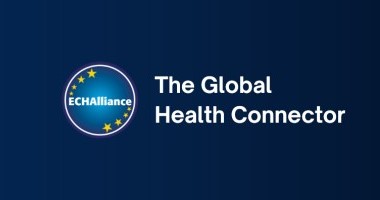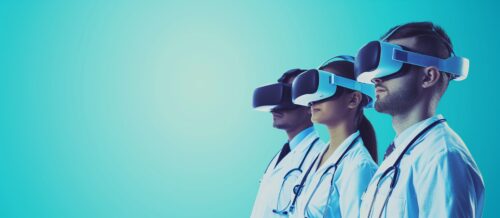
latest
Leaving our bubble: how we make extended reality work for healthcare professionals
Karolina Mackiewicz is innovation director at the European Connected Health Alliance (ECHAlliance). Following the publication of our XR paper, she explains why enthusiasts for extended reality technology in healthcare education need to reach the people who matter – the users

ECHAlliance is a Community Interest Company with revenues and activities used to provide benefits to communities in 75+ international Ecosystems around the globe.
As a member organisation, ECHAlliance brings its global community together in a network of ecosystems that match needs and solutions, break down silos, transform healthcare, transfer best practices and lessons learned and create economic opportunities. ECHAlliance promote organisations, grow networks, connect innovators and collaborate globally.
Q: What do you perceive as the greatest challenge in this space that we need to overcome?
A very basic thing is to promote these solutions better. I think that we don’t see much use of extended reality tools in education – it is seen as something that is restricted to young people or people whose hobby is computer games.
When we come from a technology or innovation background, we are in our bubble, and we see this as such a beautiful opportunity, but when you then go to a vocational education institute, this might seem like a very new thing.
And then later of course, cost and deployment – how you develop the tools and the courses.
Q: What are the most fruitful opportunities that could have the greatest impact?
Making this convenient and lowering the cost of the education would be the two biggest opportunities – I think it was last year that Meta was promoting their extended reality technology to train surgeons. But in general terms, convenience, lowering the cost and then giving the participant an opportunity to immerse in a more real-world scenario than studying from books or online material or videos. There are of course some risks related to engaging the student without an experience. I think that these extended reality tools can give this first experience in a fully-controlled and safe environment.
Q: What does good look like and how do you measure impact?
This is such a new area that we have to learn from those that are deploying it. This is similar to any framework for measuring impact of any learning tool or educational material.
Linking it with my answer to the previous question, I would say: what is the difference here? Why you are doing this and not any other online education or in-person education?I would link this immersion in the near-real world scenario to improved skills and then improved confidence. If we see this healthcare professional coming to the healthcare centre or other organisation that provides healthcare services, they can give us feedback on whether those people are better skilled to jump into work with patients, for example, than those who missed this kind of education.
So I would look for evaluation from the participants themselves, but also the healthcare institutions so that they can see that those people actually have the skills needed.
Q: What is the most innovative application of extended reality technology in healthcare education you have come across?
This is very tricky because I have looked at this more as a general opportunity rather than a specific application. However, I’ve been impressed by an example where Helsinki University Medical Centre’s neurosurgery department collaborated with Nokia, which involved broadcasting a live 3D video overlaid with augmented reality to demonstrate micro-neurosurgery techniques. Normally there is only room for about 10 to 15 people in an operating room, but this demonstration was attended by 100 people from different countries, showing the opportunities this technology offers to reach a much greater number of people.
Q: How does your role and organisation fit into the bigger picture of large-scale adoption?
As ECHAlliance, we are the global health connector, and our mission is to connect the stakeholders and build bridges between the public and private stakeholders for digital transformation in healthcare.
I think that what we see here is the need for the whole healthcare ecosystem to work together on realising the benefits of this kind of solution for healthcare education. So it’s not only coming from the tech companies (“Here we have the beautiful solution – use it”), but this solution needs to address the specific needs of healthcare education institutions, of healthcare professionals.
And then someone needs to pay for it and someone needs to maintain it and so on. To scale up those solutions and to make sure that they are actually being used for healthcare education, you need engagement of all actors.
I would also encourage the tech companies that are thinking about developing something like that not to do it without engaging the relevant players around your solution – not only for testing but actually to keep the dialogue open about the financing and so on, so that this solution then can find its markets.
It also helps an organisation like ours to promote the solutions across borders and across the continent. This is of course important for scale-up and further development, and also connecting with the other developers with those kinds of solutions or other implementers of those kinds of solutions: How do they do it? What works? What doesn’t work?
Read or download the XR in Healthcare Education paper here.
